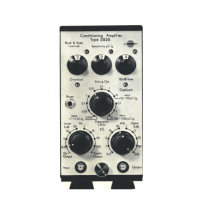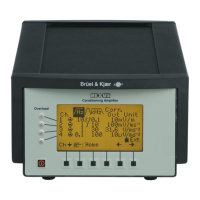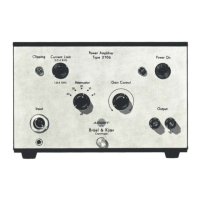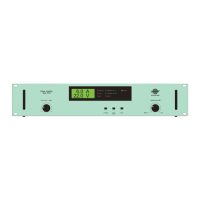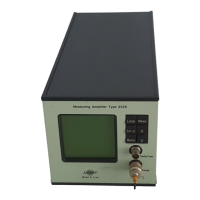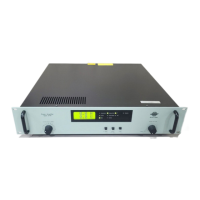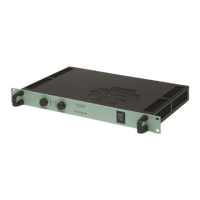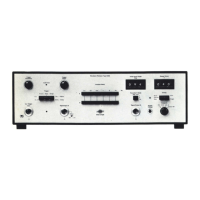Here jwCTv
o
= current supplied by
the
transducer
Vo
= open circuit voltage
of
the
transducer
CT= transducer capacitance
C
c
= cable capacitance
C
p
= preamplifier
input
capacitance
R = preamplifier
input
resistance
This circuit can be further reduced
to
Fig.1.1 b where
The
voltage v across
the
preamplifier input can be calculated from
jw C
r
VO
V =
--'----------:;--
jw C
+
-
~
Thus
the
transmission is
V C
r
jw
RC
Vo C 1 + jw
RC
At
high frequencies
jwRC
» 1 so
V C
r
Vo C
This means
that
the
transmission ratio
is
independent
of
frequency
but
depends on the total capacitance loading
of
the
microphone. It
is
therefore
desirable
to
reduce this loading as much as possible in
order
to
achieve
the
highest possible signal
to
noise ratio. Usually
the
cable capacitance
is
avoided altogether by screwing
the
microphone direct
onto
the
preamplifier.
At low frequencies jwRC
«1
so
v C
r
C jw
RC
giving a drop of six
dB
per octave as frequency decreases.
The
cut-off
frequency,
-3
dB
point,
is
where
wRC
= 1
or
1
f = 2
:1f
RC
The
cut-off
is
determined by
the
combination
of
preamplifier resistance
and
the
total capacitance. A low
cut-off
frequency could be obtained
by
putting
in
a large capacitance,
but
as this would mean seriously reduced
signal strength it
is
necessary
to
keep C as small as possible and strive for
the
highest possible preamplifier
input
resistance.
4

